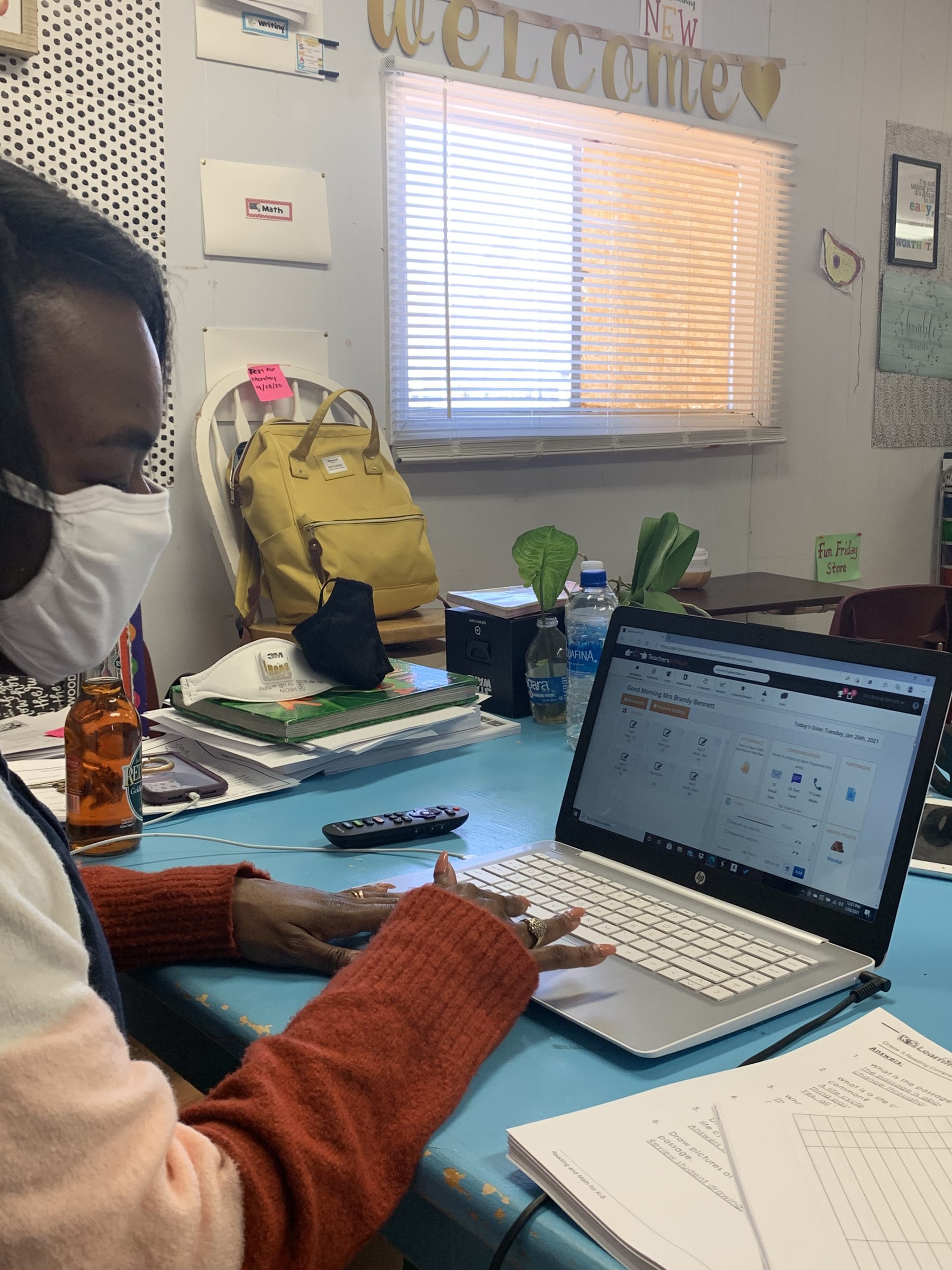One of the keys to student success is parental engagement and involvement in their education. These terms are often interchanged, but they are not necessarily the same. We will visit what each of these terms means and how to improve parental engagement in the classroom. There are dozens of ways for parents to get involved in their students’ classrooms, and we will explore some of these.
Engagement VS Involvement
While these terms are sometimes confused, they are not the same. Parent involvement is the act of doing things for the classroom. The parents do not interact with the classroom, but they are aware of things happening in the classroom. These parents often feel they are doing the best that they can, and sometimes they are. These parents may also be stapling packets, cutting out lamination, or performing other essential tasks for the classroom.

Conversely, parent engagement requires the parents to be interacting with the students. For the youngest students, this might include reading to them, helping with an art activity, or serving lunch to give the teacher a break. Children are spending time with the parents in the classroom. Not every parent can spend time in the classroom often, so engagement seems like a challenging commitment.
The most important difference is how the parents interact with the needs of the classroom. Involved parents tend to do what is asked of them. They serve a great purpose in that they do the things the teacher feels are most important. Conversely, engaged parents are often those who see an issue and suggest a solution or ways they can alleviate it. They volunteer to help the students and the school rather than just doing what is asked of them. Please keep in mind that any parent assistance in the school is welcome. Some parents cannot be engaged but are more than happy to be involved.
Learn more about Research-Based Parental Engagement
Increasing Parent Engagement
Parents are often more than willing to help in the classroom whenever possible. However, if we are seeking engagement, we cannot simply send home a list of needs and ask them to perform tasks. We can engage them through conversations surrounding the problems we see and asking for their input. Parents can be our biggest advocates and helpers, but they need to know what the school is missing and understand how they can help. Here are a few activities to increase parent involvement in the classroom.
Contact Parents Early and Often

One of the biggest mistakes is only contacting parents when there is a problem or when they need something from the parents. Contact the parents in the first few days of school and praise the student before later “problem” calls. Parents who feel the teacher only calls to complain become more hostile and less likely to engage. Likewise, even if you make an early call, contact cannot be infrequent. For parents to be engaged, they must first be involved. Those who feel they are unimportant will not be as likely to engage. Beginning with involvement can lead to engagement.
Administrators develop a communication plan that addresses frequency and nature of the calls to increase parental involvement. Consider including research-based messages that actually improve student achievement.
Make Communication Easy and Consistent
Apps allow parents and school officials to communicate with one another. However, parents and teachers do not want five different apps. Make sure that your school offers one or two apps for parent use in communication, and information sharing is easier with these apps.
Develop Several Formats for Conferences

One high school teacher gets nearly one hundred percent participation with conferences because she offers nearly every conference option you can consider. She will do a phone call, Zoom, text, in-person, and in-app conversation for conferences. She asks that the parents let her know several days ahead of time and schedule 20-minute conversations. This means that, even if a parent is at work, he or she can likely carve a few minutes out of their lunch break for their conference. They are even welcome to eat while chatting. She does ask that the students be present when possible, but she understands that they sometimes cannot be there. This anecdote is a demonstration of how offering several options can allow parents to choose the right platform for them.
Learn more about the TOP 4 parental engagement challenges here
This flexibility also creates a better working relationship between parents and teachers. When the same teacher (music teacher) needed a few extra instruments, parents stepped in. They also came together to have an annual cookout for students during COVID. Parents were willing to find unique ways to participate because their students and their time became more important than “the way conferences have always been done.”
Engage the Whole Community
One way to get parents on board is to get everyone on board. We have all heard the adage, “It takes a village to raise a child.” Truer words have never been spoken. However, schools often forget the village. Parents work further from home than they have in the past, but they frequent businesses and community centers. Getting church groups, civic organizations, and local businesses engaged in community education will prompt parents to do more. If they do work in the community, they may even be able to “double-dip” by volunteering through their employers.

More than getting the community to participate in classroom and school activities, these community partnerships can often strengthen family support systems. These groups can donate to food-insecure families and provide no-cost tutoring options for struggling students. Community partnerships are vital to student success.
Engage with Parent Needs
Providing things that the parents need often encourages them to help schools meet their needs. Low-cost after-school care, parent literacy classes, English as a Second Language classes, and workshops can all be used to help parents tremendously. Likewise, when parents are getting what they need, they are often more capable of participating in outside activities. Parents learning literacy or English skills are often unable to participate because they cannot effectively communicate with the teachers. It is the school’s duty to help those parents gain the skills they need to help their children be successful too. Working to alleviate parental stresses can be one of the most effective tools for parent engagement.
Get Creative with Reminders and Updates
Social media, text messages, and school-wide calling are all options for reminders and updates. You can still send home notes and written communication, but parents sometimes work odd hours, and they do not see everything in their children’s backpacks. Use a variety of methods for communications just as you would conferences. We have already discussed how that can change your classroom engagement.
Provide a Variety of Opportunities
Parents often want to help in the classroom, but they don’t know what is needed. While giving them a list of things to do is more involvement than engaging, they sometimes need some help. They need to learn what is needed before knowing how they can help. These opportunities can also be general suggestions. For instance, your list might say mentorship and career assistance (high school students) or tutoring. One parent might say that they can tutor math or science. Some of these parents may also be able to do this at night or on the weekend for parents who have a problem making it to the school by 3:15. Lists of field trips and volunteer opportunities with dates needed can also help parents plan for engagement. Some employers allow parents to spend time volunteering in the classroom. This is a perfect opportunity for increasing parental engagement.
Clear Expectations
Just as students need clear expectations, parents do too. They need to know what you expect of them and how they can communicate with you the most effectively. Parents want to be involved and engaged, but feeling like they are failing isn’t going to help them engage any more. Let parents know what you need and how you need it to be done. This communication is most crucial when the parents are volunteering in the classroom. Schools and teachers have specific ways they expect parents to behave, and confidentiality restrictions can influence parent engagement and participation. Forms should be provided for background checks and parental availability as early as possible.

Parents are not the only ones who need expectations. Communication with parents needs a S.M.A.R.T. goal. Setting an expectation for teachers to contact 25% of their parents each week will increase parental engagement and involvement.
Why is Parent Engagement Important?
Education is one of the few areas where it takes a village to do your job fully. You rely on parents to oversee homework, the community to provide support, and families to support fundraisers and other activities. Schools are but one member of the village that raises children and they need a supportive village to teach children to the fullest. Schools CAN teach without the village, but students benefit far more by having a supportive village surrounding the teachers. Teachers don’t just teach children. They must communicate with parents, keep records and data, attend workshops, plan parent meetings, attend staff meetings, arrange testing for special services, identify students for special services, get permission for testing and other special services referrals, remediate, and a million more things. There just isn’t enough time in the day to do this for all 20+ students in their classrooms alone. Parent engagement is crucial for student success as well.

Increased Student Success
Students do better when their parents are involved. Waterford.org notes that home visits helped decrease absenteeism by 20 percent. For some students, a twenty percent drop in absenteeism is the difference between passing and failing. Likewise, students who are present more often are more likely to retain more information. Absent students tend to fall further behind. Consider the students who do have legitimate illnesses that require several weeks of missed work. The missed work negatively impacts their success rates.
Improved School Climate
Parents and students who feel important will often do more to help the school succeed. Improving school climate also improves participation. People do more for the people who value them. When schools engage with families, they often reciprocate. The Observatory of Educational Innovation argues that “A good connection with the school lets parents understand the curriculum better and the advancement of their children.” When parents are happy with the school, they become more engaged with the classroom. And since school report cards include parent surveys in the school climate score, it behooves the school to value parent involvement and engagement.
Final Thoughts
There are more ways to engage parents and nearly infinite ways it improves student success. Parents who feel the lines of communication are open with varied opportunities to engage will often take the extra step to do so. The first step to parent engagement will always be communication. I hope this blog provided some insight on parental engagement. How will this add to your communication plan? How are you measuring its impact? What data do you need to support teachers and students in this area.
How Parent Involvement Leads to Student Success
https://observatory.tec.mx/edu-news/the-importance-of-parental-involvement-in-teaching
